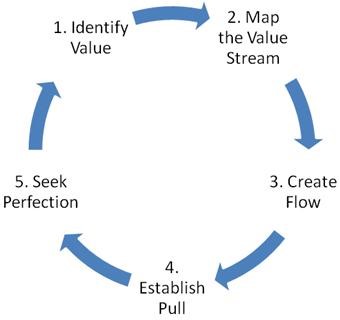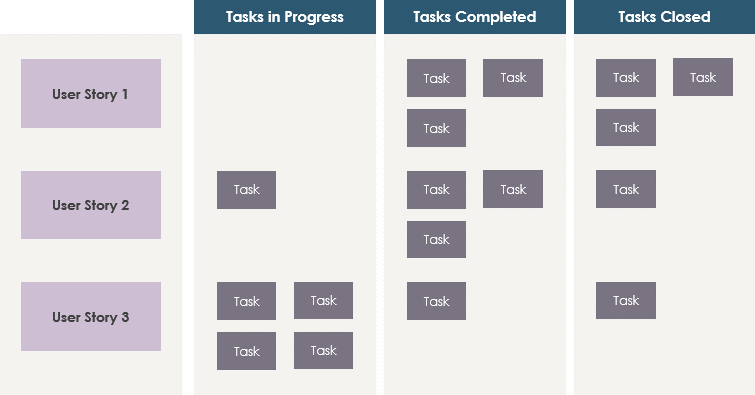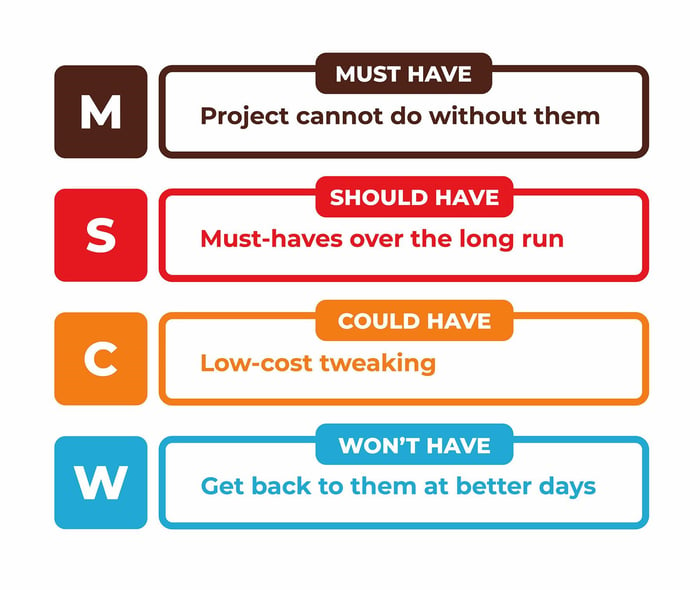
In this ever-changing economic landscape, small businesses are in constant search of better ways to scale. But it’s all about getting the timing right. Scaling too early can crush your eCommerce startup while scaling too late can leave it in the lurch.
With Big Data initiatives, you can create smarter, profitable improvements to optimize your eCommerce marketing strategy. eCommerce businesses can also experiment with new strategies in cycles before implementing them on a larger scale — this is the core philosophy behind lean. You can integrate this into your marketing plan, making it more agile and adaptive to marketing trends and competitors.
In this post, you'll learn more about lean marketing and how beneficial it can be for your store.
But before adopting lean marketing principles, let’s explore what this concept entails and why your business needs it.
What is lean marketing?
The modern lean methodology originated from the Japanese company Toyota. Due to the company’s massive success with this model, other adaptations of the lean philosophy became popular with time.
Lean philosophy has five core principles/action points:

Source: ASME
In marketing, Eric Ries’s book The Lean Startup started the ongoing lean revolution. Startup, SaaS, tech, and eCommerce companies worldwide now apply this philosophy as part of lean development.
Today, the core principles of lean marketing involve iterative cycles of process optimization, testing, and assessment to maximize productivity.
With lean marketing, you're able to:
- identify value clearly
- set intermediate goals better
- adjust the flow and ongoing processes
- experiment more with marketing practices
- eliminate ineffective approaches
- save resources
In essence, lean marketing involves the main lean methodology feature: adjustability. You need to be flexible because, as the famous saying states, 'change is inevitable.' This applies to both digital marketing and eCommerce fields.
A few businesses can afford expenditures on building an eCommerce marketing strategy and wait for months to get a first understanding of its efficiency. Meanwhile, the landscape can be changed; competitors can overcome you. It's a constant dynamic you have in eCommerce, especially if we're talking about emerging businesses.
In this case, the waterfall approach, which evaluates the final product or process, may not fit well in current conditions. That's why the lean methodology has gained popularity among eCommerce marketers.
Who needs lean marketing?
Every forward-thinking eCommerce business needs to consider adopting lean marketing principles.
This concept will help not only your marketing but your business strategy entirely. You'll be able to stay on pace with the ever-changing market.
Not only that, but lean marketing principles allow you to monitor the results of your decisions after every cycle. On the decision-making front, lean marketing enables you to evaluate intermediate results. You either re-think your marketing efforts or continue doing the same activity with such cycle reviews since it's fruitful.
As an example, let’s say you just launched an eCommerce website selling candles. Your marketing team decides to explore social media marketing as a core strategy. You're developing an Instagram account; after a year, you make an evaluation and realize that it's not working. You wasted resources and didn't get any profit.
Based on a lean marketing approach, you should review social media activity in a quarter. You would get the gist that it's not working well, so you switch to PP, which shows better results. Yes, there is still a resource waste, but it’s smaller.
Consider trying lean marketing, especially if:
- you are a newly emerged brand — it'll help to experiment with branding, promotion quickly
- you are an established brand that is stuck with marketing — you'll be able to optimize conversions, improve customer acquisition and engagement
- you are planning to improve your website — it'll help to minimize costs and create the most optimized and appealing website faster
On a global scale, lean marketing is popular among giant companies as well. Companies like Pinterest have also employed lean marketing to escape from obscurity into the limelight. Toyota, Tesla, and Nike also use lean marketing initiatives to stay competitive.
Such giants also think of reducing resource waste and optimizing their marketing. So why wouldn't you think of it? The principles remain the same. It's a matter of scale. If you are still on the fence about lean marketing, you can follow the examples of these multinational companies to maximize growth.
What are the core lean marketing principles?
In our definition of lean marketing, we have hinted at the core ‘principles’ behind this philosophy. Here are the tenets of lean marketing in eCommerce.
Marketing Cycles
When working with lean marketing, teams must focus their efforts on individual cycles. The plan is to prioritize a particular goal rather than cover everything at once by building a long-term strategy and focusing on an outcome exclusively.
However, you should understand that it doesn't mean that using lean marketing allows you not to have a marketing strategy. You can reach the same goal in different ways (like in the above case about a candle store).
Working in cycles allows your business to continue implementing your marketing strategy. You stay aligned with your ultimate long-term goals. And most importantly, the results of every marketing cycle in lean informs changes in the next one.
Creative Sprints
Every cycle focuses on a single objective. Lean marketing helps eCommerce businesses to organize self-sustaining scrums (team-based frameworks) that are executed gradually. For time-sensitive projects and marketing campaigns, creative sprints are essential to meet time-specific objectives in the company.
Normally, a sprint in lean marketing is similar to agile sprints. You spend 5-10 days working with an objective or a small set of objectives. After the identification of an objective, execution comes. The sprint is made and you evaluate its results. Then, continue with the same approach, try to fix it, or choose another solution.

Source: Visual Paradigm
With creative sprints, it's important to keep in mind that fuzziness, many contexts, and unclear objectives won't give results. It's better to do one practice qualitatively and understand how it impacts your ultimate goal rather than experiment with a few practices during a sprint. Leave experimentation to the next sprints and identify it during sprint planning.
Buyer Personas and Stories
As Marketing Institute research states, 93% of companies applying buyer personas to their marketing efforts reach revenue goals. Lean marketing can only succeed when you keep in mind your buyer personas and develop a buyer story.
Traditionally, a buyer persona is a combined character of an ideal customer of your eCommerce store. It's not a single type of customer, as a rule. So you'd probably need to come up with a few customer types by identifying their age, location, buyer behavior, and needs.
With preliminary marketing research, you'll be able to polish your buyer personas through lean marketing since you'll receive insights quicker and will experiment with various channels.
To develop a relevant user (customer) story, marketers must gather information from multiple buyers and channels to identify what triggers them to purchase, which purchasing process they prefer, and other details about a customer type.
Measurements
Your marketing team needs to measure eCommerce metrics. Typically, you have to use data analytics practices; collect data, evaluate it, visualize and report.
These lean-driven data initiatives offer valuable insights into every aspect of the marketing process. You also need to measure team success with the outlined goals. Eventually, the results will be used in subsequent iterations of the lean marketing strategy.
Transparency
Lean marketing relies on transparency within the team. Every team member needs to stay aware of expectations from team members and the overall team performance. This centralized accountability system motivates team members to apply maximum effort to every task or project involved in the marketing cycle.
To keep team members on the same page always, you should initiate regular syncs and asynchronous documentation.
Backlogs
This comes from transparency and team syncs. A backlog is a repository for ideas and projects arranged based on priority. In lean marketing, backlogs are essential for planning creative cycles and optimizing sprints.
Companies also use them as idea dumps. Essentially, every project contributor can add their ideas to the backlog, which the marketing manager curates for faster adjustments.
Regular Reports
Markets are changing at a rapid pace. It means that your eCommerce business needs to update backlogs and experiment with new approaches and practices.
But how can you stay in touch with emerging trends? The answer is regular reports.
Encourage your teammates to share insights on their work constantly. It can be done on daily standups or weekly syncs in a documented way. It's essential to be transparent about challenges and blockers too. For example, if a PPC specialist can't run a campaign due to no design materials, there should be a clear discussion about that. You and your team should resolve small issues on the go.
These reports will show the team if they are on track to meet the objectives of every cycle.
Benefits of Lean Marketing for eCommerce Businesses
In the global market, top brands are choosing lean marketing strategies over traditional strategies. Although modern technologies, like AI implementation, play a significant role in this shift, lean marketing remains beneficial to eCommerce businesses.
Let’s check out the main advantages.
1. Promotes fast-paced marketing
The lean philosophy allows space for rapid growth and adjustments. Since every marketing or development objective occurs in iterative cycles, your company should leverage sprints to maximize efficiency.
Let’s say your competitor has announced that they’re launching a loyalty program. Project managers or marketing leads should be aware of it and have some ideas to react. You don't need to wait and see how a competitor's loyalty program will work, neither do you need to initiate or change yours right after the news.
Still, the dynamic of the current eCommerce market requires you to react faster. It’s possible with lean marketing principles due to short-term objectives setting, team synchronization, transparency, and reporting.
2. Prioritizes objectives
Reconsider the multitasking philosophy if you use it. Multitasking has bad effects on employees like increased stress levels and others. With the lean methodology, you can prioritize significant tasks better.
For example, teams working on multiple projects can decide which project to focus the company’s resources on. And since you have tangible goals and metrics, the prioritization becomes less complicated.
To help with prioritization in lean marketing, you can choose one of the popular frameworks — for instance, the MoSCoW method, where you prioritize your activities on a scale of Must-Should-Could-Won't.

Source: Railsware
To boost the decision-making process, consider trying a relatively new BRIDGeS framework. It is suitable for both global decisions and small problem-solving activities. You state a challenge, generate a set of solutions, decompose them, and choose the best option at the moment.
3. Monitors progress
Core principles of lean marketing like transparency and regular reports are essential for progress monitoring. Since every team member shares their goals, the project contributors are always abreast of challenges and shortcomings experienced by others.
Tracking progress and analyzing marketing data is critical for improving your eCommerce marketing strategy and helping your business thrive.
For this purpose, don't forget about constant reporting and checking your metrics. Using real-time reports is the way to monitor progress best.
4. Optimizes spending
According to Eric Ries’s methodology, lean strategies allow you to build a product (or objective in our case) during the initial sprint. Afterward, your marketers must measure the key metrics to determine high-cost redundancies. Eventually, you can learn from the process and reduce costs in subsequent cycles.
This feedback loop is called the Build-Measure-Learn cycle. When properly implemented, it can save eCommerce companies lots of expenditure and increase ROI.
5. Focuses on the future
Traditional marketing strategies are hardly flexible to market dynamics. They reflect the trends that have happened recently in the field and need more time and resources for the outcomes to be evaluated.
As a result, idea silos and backlogs can become defunct before or during the strategy steps execution. But with lean marketing, your company always stays flexible to potential changes in consumer behavior and market factors.
Since your marketers work in cycles, they can easily adjust strategies to meet current market demands without incurring significant resource losses.
The focus on the future also relates to using lean marketing principles as an influencer of the future eCommerce landscape. Quickly adapting and testing campaigns based on competitors' approaches, you can create your own approach. Besides, lean marketing helps you focus on the nearest future while you use already established marketing strategies and sell goods, getting revenue now.
Final Words
Lean marketing is arguably the most cost-effective way for marketers to maximize revenue generation in eCommerce. Although Toyota developed this concept for manufacturing, experts have adapted it to eCommerce marketing.
As a marketer, you must understand the core principles of lean marketing. Start with user stories and create iterative cycles. Use a seamless feedback loop that functions on transparency to improve the final product or approach.
Ultimately, lean marketing will ensure that your company develops a future-proof strategy within the specified launch deadline.





Leave a reply or comment below